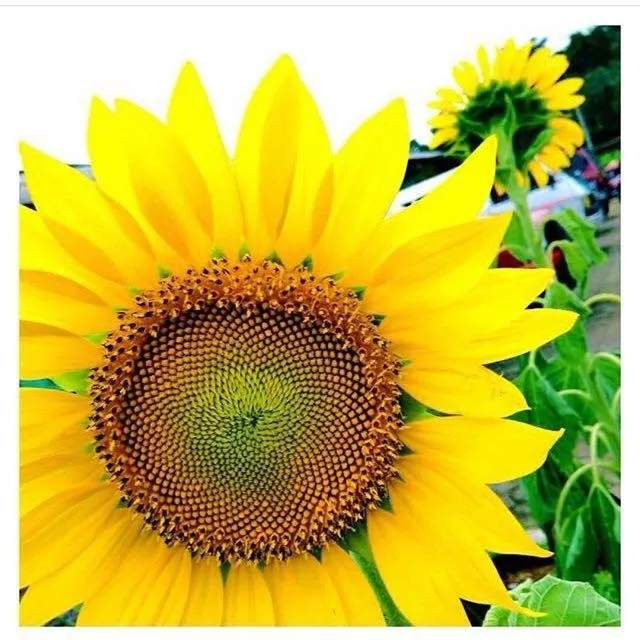
Who does not know the sunflower plants? In addition to its shape is similar to the sun that always shines the world that is round and yellow, this flower is also always facing toward the sun. Try you notice, usually this sunflower will be bowed down when night comes and will face his face again during the day.
The flower that has the latin name of Helianthus annuus L, is derived from the land of North America. In Indonesia itself, precisely in the area of Java, the interest of the Sun began to be planted since 1919.
Sunflower plants are planted in mountainous areas with sufficient moisture and get plenty of direct sunlight. This wet trunked plant usually grows as high as 1 to 3 meters.
Because of its beautiful shape, this flower is usually only used as an ornamental plant. However, along with the public awareness of the many benefits it produces, so some people have started to use it for treatment. The flowers contain helianthoside A-B-C, quercimeritrin, echinocysat acid, and oleanolate acid. Then, in the seeds also contain prostaglandin E, beta-sitosterol, quinat acid, phytin, chlorogenic acid, and 3,4-benzopyrine.
In each 100 grams of seed, there is a total fat content of 100 that consists of saturated fat: 9.8 and also unsaturated fat Oleat: 11.7 and Linoleat: 72.9 and the rest do not contain cholesterol.
Generally in Indonesia sunflower seeds are often used as snacks or snacks called kwaci sunflower seeds. Sunflower seeds have a good nutritional content. Actually not only seeds, all parts of the sunflower also has health benefits. For example, the flowers have the effect of lowering blood pressure and as a pain-reducing pain.
Then, the seed is useful as an anti-dysentery and to treat measles. The leaves also have considerable benefits such as anti-inflammatory, anti-malarial, and analgesic (pain relief).
Likewise with its marrow stem which has properties to increase vitality, treat the liver, stimulate urinary expenditure, analgesics, and others. The roots of this plant are also useful for treating urinary tract infections, inflammation of the respiratory tract (bronchitis), and whooping cough.
For treatment on the outside, Sun flowers can be smoothed and then affixed to the affected part. For example, to treat boils, inflammation of the breast, and rheumatism. As for the treatment of the inside of the body, usually sun flower plants can be boiled and drunk the water. Or, the sunflower seeds can be roasted, finely ground, and brewed with hot water. Typically, treatment in this way is done to overcome shortness of breath, prevent stomach cancer, bloating, dysentery, beri-beri, malaria, whitish, hernia, and others.
The most widely used part is sunflower oil, which is believed to overcome various chronic diseases including heart disease and neurological disorders. In addition to containing a single-chain unsaturated oil that is good for the heart, this oil also contains vitamin E which serves as an antidote to free radicals. This content is useful for skin care because it can fight the effects of aging such as wrinkles and dull skin.

itemIn addition to the drug, sun flower plants have other benefits that can neutralize the effects of radiation from nuclear waste. This benefit is evidenced in the tragedy of nuclear reactor leak at Chernobyl in 1986. When most of the water in the region is radioactive, the planting of sunflower plants on floating rafts was able to reduce the impact of radiation in the waters by up to 95 percent. This is due to the presence of a thick and strong root structure so as to extract heavy metals such as arsenic and tin. Even radioactive elements can also be absorbed, including uranium and stronium-90 which can cause genetic mutations in humans.